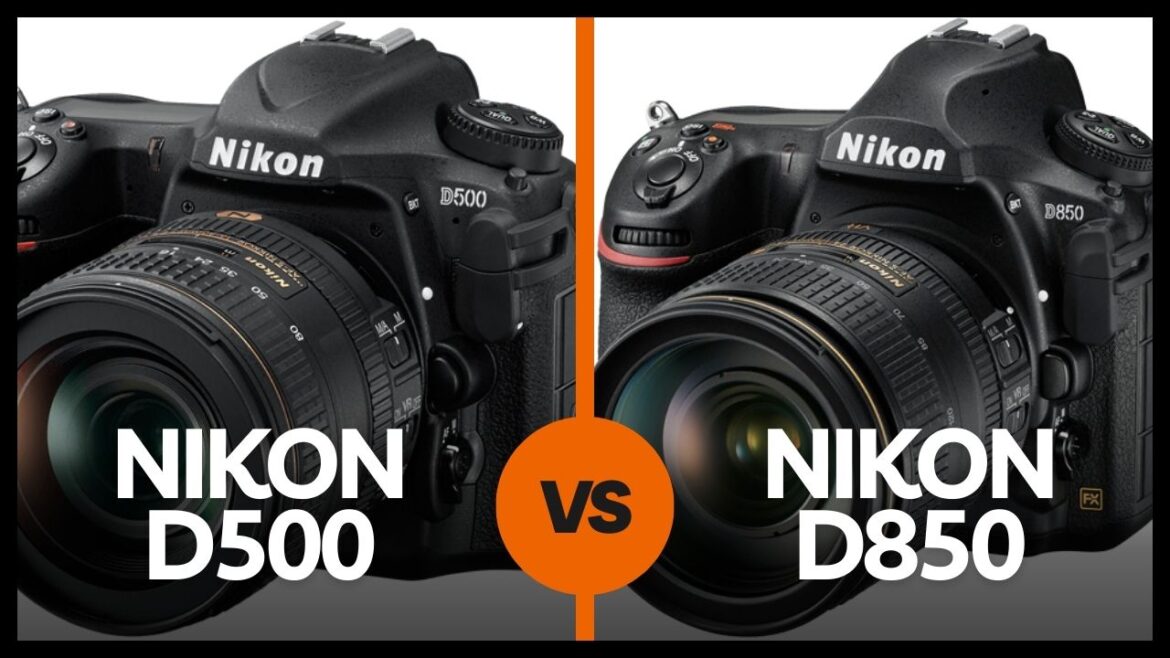Table of Contents
Full Comparison: Nikon D500 vs D850 – Which is the Best Camera?
When it comes to choosing the perfect camera for your photography needs, Nikon is a name that often stands out. The Nikon D500 and D850 are two exceptional models that cater to both amateurs and professionals.
In this extensive comparison, we’ll delve deep into these two remarkable cameras, breaking down their specifications, strengths, and limitations. Whether you’re an avid wildlife photographer, a portrait enthusiast, or simply looking to upgrade your DSLR, this in-depth analysis will help you make an informed decision.
Nikon D500 vs. Nikon D850 Specifications
| Specification | Nikon D500 | Nikon D850 |
|---|---|---|
| Sensor | 20.9 MP DX-format CMOS | 45.7 MP FX-format CMOS |
| Crop Factor | 1.5x | None (Full Frame) |
| Autofocus Points | 153 points | 153 points |
| Cross-type Sensors | 99 | 99 |
| AF Modes | AF-S, AF-C | AF-S, AF-C |
| Image Quality and Resolution | Excellent | Outstanding |
| ISO Range | 100-51,200 (expandable) | 64-25,600 (expandable) |
| Dynamic Range | Impressive | Excellent |
| Shutter Speed | 1/8000 sec | 1/8000 sec |
| Continuous Shooting | 10 fps | 7 fps |
| Low-Light Performance | Good | Excellent |
| Battery Life | ~1,240 shots | ~1,840 shots |
| Wireless Features | Wi-Fi, NFC | Wi-Fi |
| Weight | 860 g (1.9 lbs) | 1,015 g (2.2 lbs) |
| Dimensions (W x H x D) | 147 x 115 x 81 mm | 146 x 124 x 78.5 mm |
| Price (Approximate) | Lower | Higher |
Unraveling the Nikon D500: Specifications, Strengths, and Limitations
Let’s begin with the Nikon D500. This camera packs a punch with a 20.9-megapixel DX-format sensor, ideal for those who value portability and versatility.
The DX sensor offers a 1.5x crop factor, perfect for wildlife enthusiasts and those who want to get closer to the action. It’s worth noting that the D500 lacks the full-frame capability of its counterpart, the D850.
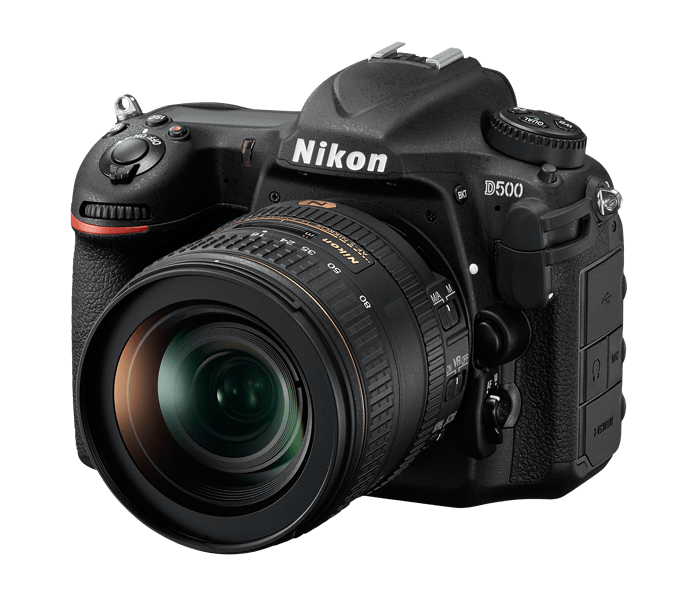
Key Features of Nikon D500: Sensor, Lens, and Autofocus System
The Nikon D500 excels in fast-action scenarios, thanks to its 153-point autofocus system, including 99 cross-type sensors. This system, with AF-C mode, is a boon for photographers capturing birds in flight or any moving subject.
Coupled with a blazing fast shutter speed, the D500 is perfect for shooting subjects in motion.
Image Quality and Resolution: What Can the Nikon D500 Deliver?
When it comes to image quality, the D500 delivers remarkable results. With its 20.9-megapixel sensor, you can expect high-resolution images with rich detail.
The camera also provides excellent dynamic range and the capability to shoot in RAW for maximum editing flexibility.
Shutter Speed, ISO, and AF Modes of the Nikon D500
The D500 boasts a wide ISO range, allowing you to shoot in low-light conditions with ease. Its fast shutter speed, combined with various AF modes, makes it an ideal choice for action and wildlife photography.
The camera’s AF-S and AF-C modes ensure you can track and photograph your subject without any fuss.
Handling Low Light Photography with Nikon D500: Pros and Cons
In low-light scenarios, the D500 performs admirably due to its excellent ISO performance. However, its DX sensor may not offer the same low-light capabilities as a full-frame camera like the D850.
When shooting in challenging lighting conditions, this is a consideration worth keeping in mind.
Understanding Nikon D500’s Battery Life, Wireless Capabilities, and Additional Features
The D500 features a robust battery that can keep you clicking away for an extended period. Its wireless capabilities, including Wi-Fi and NFC, provide easy connectivity for quick image sharing.
It also offers a weather-sealed body, a crucial feature for outdoor photographers looking to brave the elements.
Nikon D850 Decoded: A Detailed Look at the Camera’s Attributes
Now, let’s turn our attention to the Nikon D850, a camera that caters to those who prioritize image quality, resolution, and versatility. This full-frame FX camera boasts a 45.7-megapixel sensor, making it an ideal choice for portrait and landscape photographers seeking the utmost detail and clarity.
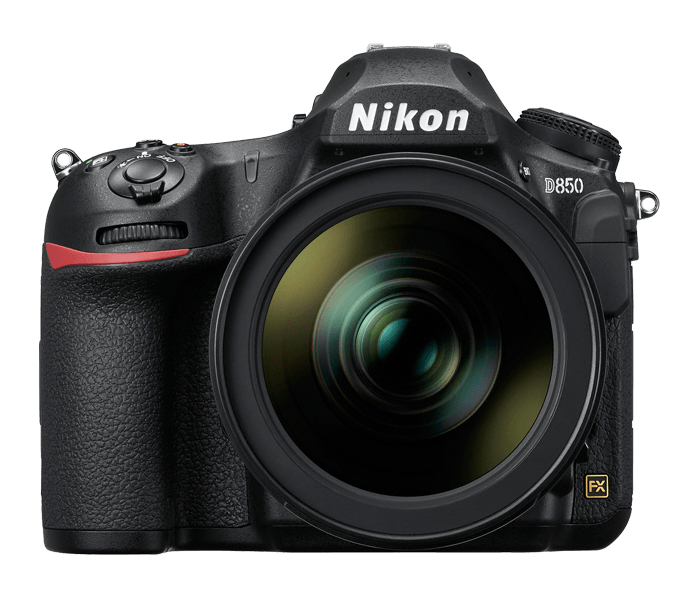
Exploring Nikon D850’s Key Features: Sensor, Lens, and Autofocus
The D850 features a full-frame sensor, providing a significant advantage in terms of image quality and low-light performance. It offers a 153-point autofocus system similar to the D500, ensuring fast and accurate focusing.
With its AF-S and AF-C modes, the D850 caters to a wide range of shooting scenarios.
Image Quality and Resolution: How Does the Nikon D850 Perform?
The D850’s 45.7-megapixel sensor delivers exceptionally high-resolution images with incredible detail. The camera’s dynamic range is impressive, making it a top choice for those who require extensive post-processing and editing capabilities.
Shooting in RAW format provides maximum flexibility when working on your photos.
Shutter Speed, ISO, and More: A Closer Look at Nikon D850’s Shooting Modes
The D850 offers a wide ISO range, allowing for exceptional low-light performance. Its fast shutter speed and various shooting modes make it a versatile choice for photographers in different fields, from landscape to wildlife.
Low Light Photography with Nikon D850: A Comprehensive Analysis
When it comes to low-light photography, the D850’s full-frame sensor provides a notable advantage, delivering cleaner and less noisy images in challenging lighting conditions.
For photographers who frequently work in low light, this is a compelling reason to consider the D850.
Tackling Nikon D850’s Battery Life, Wireless Features, and Other Extras
The D850 features a dependable battery life that ensures you can keep shooting without frequent interruptions. Its wireless capabilities, including Wi-Fi, enable convenient image transfer and remote control.
The camera also offers a weather-sealed body, enhancing its durability.
Nikon D500 vs. Nikon D850: Key Differences
| Aspect | Nikon D500 | Nikon D850 |
|---|---|---|
| Sensor Size | DX (Crop) | FX (Full Frame) |
| Resolution | 20.9 MP | 45.7 MP |
| ISO Range | 100-51,200 (expandable) | 64-25,600 (expandable) |
| Continuous Shooting Speed | 10 fps | 7 fps |
| Low-Light Performance | Good | Excellent |
| Battery Life | ~1,240 shots | ~1,840 shots |
| Weight | 860 g (1.9 lbs) | 1,015 g (2.2 lbs) |
| Dimensions (W x H x D) | 147 x 115 x 81 mm | 146 x 124 x 78.5 mm |
| Price (Approximate) | Lower | Higher |
Nikon D500 Versus Nikon D850: A Head-to-Head Comparison
Now, let’s delve into a direct comparison of these two Nikon cameras, focusing on crucial aspects that can influence your decision.
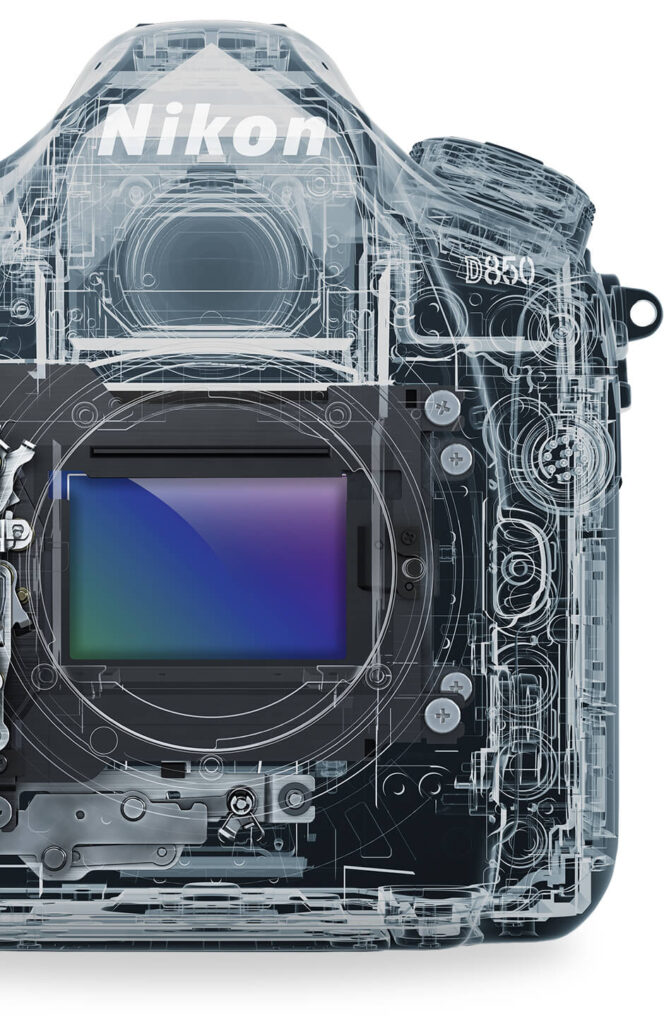
Comparing Sensors: Nikon D500 vs Nikon D850
The D500’s DX sensor is advantageous for its portability and reach, while the D850’s full-frame FX sensor excels in image quality and low-light performance.
Analyzing Autofocus and Shutter Speed: D500 vs D850
Both cameras share a similar 153-point autofocus system and fast shutter speeds, making them well-suited for action photography.
Image Quality, Resolution, and Performance in Low-Light Conditions
The D850 takes the lead in image quality and excels in low-light conditions, thanks to its full-frame sensor.
Differences in Battery Life, Wireless Capabilities, and Other Extras
Both cameras offer robust battery life and wireless features, but the D850’s full-frame advantage and superior low-light capabilities make it a compelling choice.
Making the Final Choice: Which Suits You Best – Nikon D500 or Nikon D850?
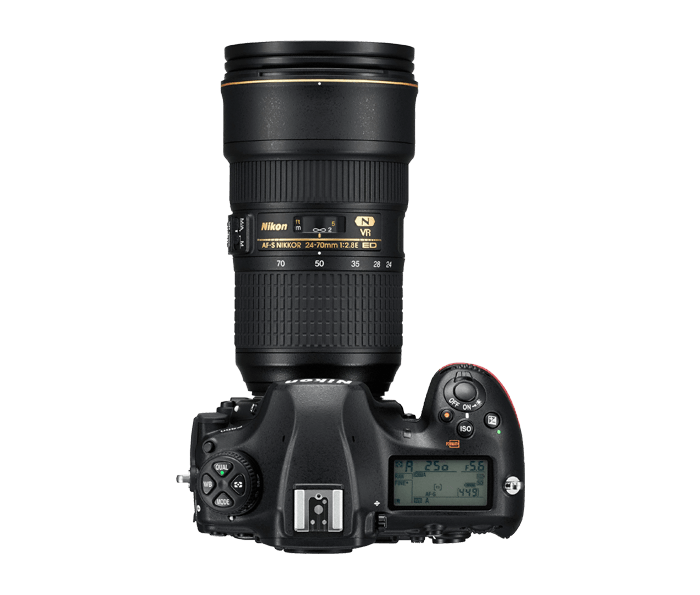
Choosing for Image Quality: Should You Go for Nikon D500 or D850?
If you prioritize image quality and are willing to invest in a full-frame camera, the Nikon D850 is your best bet. Its 45.7-megapixel sensor and low-light capabilities make it a top choice for those who demand the highest standards.
Considering Shooting Modes and Speed: Weighing D500 Against D850
For photographers who need a camera capable of rapid action and wildlife photography, the Nikon D500 is a superb choice. Its DX sensor and fast autofocus system cater to those who need speed and accuracy.
Assessing Extras: How Nikon D500 Compares to Nikon D850 in terms of Extra Features
In terms of extra features, both cameras offer excellent battery life and wireless capabilities. However, the D850’s full-frame sensor provides a significant advantage in low-light scenarios.
Nikon D500 vs. Nikon D850: Which one wins?
Now, let’s compare these two cameras head-to-head to help you make an informed choice.
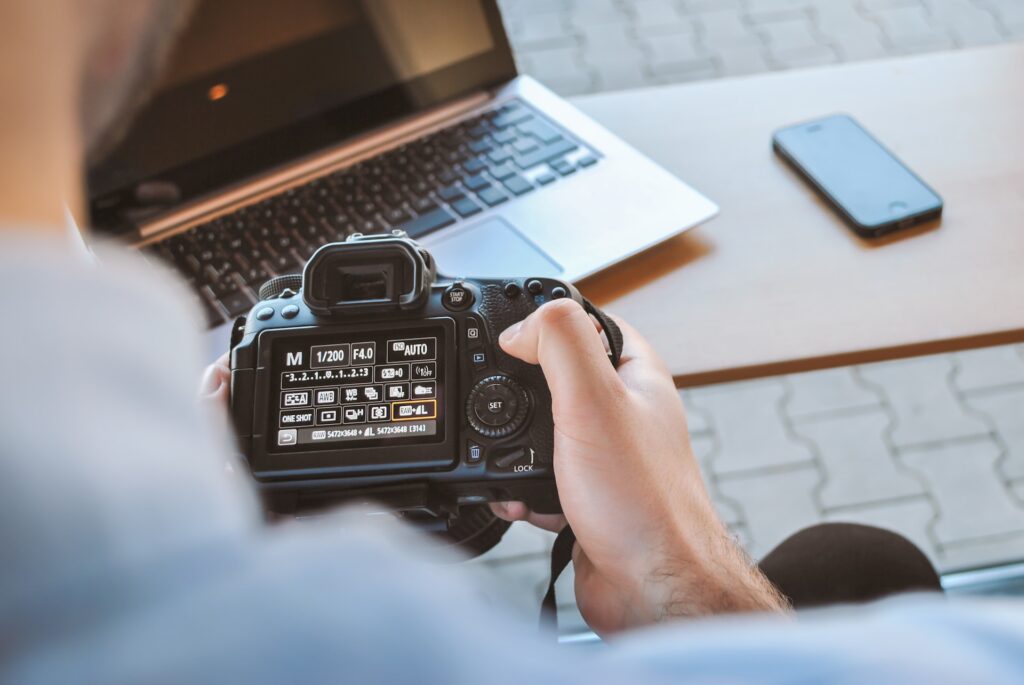
Sensor and Image Quality
- D500: The D500’s DX sensor offers a 20.9-megapixel resolution, while the D850 boasts a 45.7-megapixel full-frame sensor. The D850 has a significant advantage in image quality and resolution, making it ideal for high-detail photography.
- Winner: D850
Autofocus and Shutter Speed
- D500: Both cameras share a similar 153-point autofocus system and fast shutter speeds. They are equally suitable for capturing fast action.
- Winner: Draw
Low-Light Performance
- D500: The D500 performs well in low-light conditions, but the D850’s full-frame sensor provides cleaner and less noisy images in challenging lighting situations.
- Winner: D850
Battery Life
- D500: The D500’s EN-EL15 battery offers approximately 1,240 shots per charge, while the D850’s EN-EL15a battery provides about 1,840 shots. The D850 offers a slight advantage in battery life.
- Winner: D850
Wireless Features
- D500: Both cameras feature built-in Wi-Fi, making them equally convenient for image sharing and remote control.
- Winner: Draw
Choosing the Right Camera for You
In summary, the Nikon D500 and D850 are exceptional cameras, each excelling in different areas. Your choice depends on your specific photography needs:
Image Quality and Versatility
- If you prioritize image quality, versatility, and are willing to invest in a full-frame camera, the Nikon D850 is your best choice. Its 45.7-megapixel sensor and low-light capabilities make it a top pick for photographers who demand the highest standards.
Speed and Portability
- For photographers who need a camera capable of rapid action and wildlife photography, the Nikon D500 is an excellent option. Its DX sensor and fast autofocus system cater to those who need speed and accuracy.
Assessing Extra Features
- Both cameras offer excellent battery life and wireless capabilities, but the D850’s full-frame sensor provides a significant advantage in low-light scenarios.
Ultimately, the decision between the Nikon D500 and D850 comes down to your specific photography style and priorities. Consider your needs, and you’ll find the perfect Nikon camera to elevate your photography to new heights. Whether you opt for the speed demon D500 or the image quality maestro D850, you can be sure that you’re investing in a top-notch Nikon camera.
Key Takeaways: Which Camera is Right for You?
In summary, the Nikon D500 and D850 are both outstanding cameras, each catering to different needs. If you prioritize image quality and versatility in low-light conditions, the D850 is the clear winner. On the other hand, if you require speed and portability for wildlife and action photography, the D500 is an excellent choice. Consider your specific photography needs, and you’ll find the perfect Nikon camera to elevate your photography game.
Still confused? Let’s dive even deeper into the specifications and features of these cameras to provide you with a comprehensive understanding of which one suits your unique requirements.
| Specification | Nikon D500 | Nikon D850 |
|---|---|---|
| Sensor and Resolution | ||
| Sensor Type | 20.9 MP DX-format CMOS | 45.7 MP FX-format CMOS |
| Crop Factor | 1.5x | None (Full Frame) |
| Autofocus System | ||
| Autofocus Points | 153 points | 153 points |
| Cross-type Sensors | 99 | 99 |
| AF Modes | AF-S, AF-C | AF-S, AF-C |
| Image Quality and ISO | ||
| Dynamic Range | Impressive | Outstanding |
| ISO Range | 100-51,200 (expandable) | 64-25,600 (expandable) |
| Shooting Modes | ||
| Shutter Speed | 1/8000 sec | 1/8000 sec |
| Continuous Shooting | 10 fps | 7 fps |
| Low-Light Performance | ||
| Low-Light Capabilities | Good | Excellent |
| Battery Life and Connectivity | ||
| Battery Life | ~1,240 shots | ~1,840 shots |
| Wireless Features | Wi-Fi, NFC | Wi-Fi |
Nikon D500: The Versatile Speed Demon
The Nikon D500 is often praised for its speed and versatility. Let’s take a closer look at its key specifications and attributes:
Sensor and Resolution
- Sensor Type: The D500 features a 20.9-megapixel DX-format CMOS sensor, which is smaller than a full-frame sensor but still offers excellent image quality.
- Crop Factor: With its DX sensor, the D500 has a 1.5x crop factor, providing extra reach for telephoto lenses, making it great for wildlife and sports photography.
Autofocus System
- Autofocus Points: The D500 boasts a remarkable 153-point autofocus system, with 99 cross-type sensors, ensuring precise and quick focusing.
- AF Modes: It offers AF-S (Single-servo AF) and AF-C (Continuous-servo AF) modes, making it perfect for capturing both still and moving subjects.
Image Quality and ISO Performance
- Dynamic Range: The D500 delivers impressive dynamic range, allowing you to capture a wide range of tones in your images.
- ISO Range: The camera offers an ISO range from 100 to 51,200, expandable to 50-1,640,000, which is excellent for low-light performance.
Shooting Modes
- Shutter Speed: With a maximum shutter speed of 1/8000 seconds, the D500 can freeze fast-paced action.
- Continuous Shooting: It provides a burst mode of up to 10 frames per second, ideal for sports and wildlife photography.
Low-Light Performance
- Low-Light Capabilities: While not a full-frame camera, the D500 performs admirably in low-light conditions, producing clean and noise-free images up to higher ISO settings.
Battery Life and Connectivity
- Battery Life: The D500 is powered by an EN-EL15 battery, capable of approximately 1,240 shots per charge.
- Wireless Features: It offers built-in Wi-Fi and NFC for easy image sharing and remote control.
Nikon D850: The Image Quality Maestro
The Nikon D850 is revered for its exceptional image quality. Let’s delve into its specifications and features:
Sensor and Resolution
- Sensor Type: The D850 features a 45.7-megapixel full-frame FX-format CMOS sensor, providing unparalleled image quality and resolution.
- Full-Frame Advantage: With its full-frame sensor, the D850 excels in low-light conditions and offers superior image quality.
Autofocus System
- Autofocus Points: It also has a 153-point autofocus system with 99 cross-type sensors, ensuring quick and accurate focusing.
- AF Modes: Like the D500, the D850 offers AF-S and AF-C modes, making it versatile for various shooting scenarios.
Image Quality and ISO Performance
- Dynamic Range: The D850’s dynamic range is outstanding, allowing for extensive post-processing and editing.
- ISO Range: It offers an ISO range from 64 to 25,600, expandable to 32-102,400, providing excellent low-light performance.
Shooting Modes
- Shutter Speed: With a maximum shutter speed of 1/8000 seconds, the D850 matches the D500’s speed.
- Continuous Shooting: It provides a burst mode of up to 7 frames per second, suitable for a variety of photography styles.
Low-Light Performance
- Low-Light Capabilities: The D850’s full-frame sensor gives it a significant advantage in low-light situations, producing cleaner images with less noise.
Battery Life and Connectivity
- Battery Life: The D850 utilizes an EN-EL15a battery, capable of approximately 1,840 shots per charge, offering a slight advantage over the D500.
- Wireless Features: It also offers built-in Wi-Fi for image sharing and remote control.
FAQs
Q: What are the main differences between the Nikon D500 and the Nikon D850?
A: The Nikon D850 is a full-frame DSLR camera with a higher resolution sensor (45.7 megapixels) compared to the Nikon D500, which is a DX format DSLR with a 20.9 megapixel sensor. The D850 also has a larger buffer for continuous shooting, a higher resolution viewfinder, and better low-light performance compared to the D500.
Q: Which are the key features to consider for a portrait photographer when comparing the Nikon D500 and the Nikon D850?
A: Portrait photographers might prefer the Nikon D850 due to its higher resolution sensor, which allows for more detailed and sharper portrait images. Additionally, the D850 has a higher resolution viewfinder, making it easier to compose and focus on portraits.
Q: What are the differences in the gallery settings between the Nikon D500 and the Nikon D850?
A: Both the Nikon D500 and D850 offer gallery settings, but the D850 has a higher resolution sensor and a larger buffer, allowing for more detailed and higher quality images to be displayed in the gallery.
Q: In terms of viewfinder quality, how do the Nikon D500 and the Nikon D850 compare?
A: The Nikon D850 has a higher resolution viewfinder compared to the D500, providing a clearer and more detailed view when composing shots. This can be especially beneficial for photographers who rely heavily on the viewfinder for precise framing and focusing.
Q: What are the main advantages of the Nikon D500 over the Nikon D850?
A: The Nikon D500 offers faster frame rates, making it suitable for capturing fast-paced action and sports photography. Additionally, it has a smaller and lighter body, making it more portable for photographers who are frequently on the move.
Q: When comparing the Nikon D850 and the Nikon D500, which camera is considered best for wildlife photography?
A: The Nikon D500 is often preferred for wildlife photography due to its faster frame rates, DX format sensor providing a 1.5x crop factor, and its lighter and more compact body, making it easier to carry in the field.
Q: What features make the Nikon D850 stand out as the best camera choice for landscape photography?
A: The Nikon D850’s high-resolution sensor, expansive dynamic range, and excellent low-light performance make it an ideal choice for landscape photographers who require detailed and vibrant images, especially in challenging lighting conditions.
Q: Can the Nikon D850 be used with different lenses, including those from other brands?
A: Yes, the Nikon D850 is compatible with a wide range of lenses, including those from third-party manufacturers like Sigma, Tamron, and Sony, albeit with certain limitations in functionality and features depending on the specific lens model.
Q: What are the main drawbacks of the Nikon D500 when compared to the Nikon D850?
A: The Nikon D500 has a lower resolution sensor, smaller buffer for continuous shooting, and a smaller viewfinder compared to the D850, which may impact image quality, especially in low-light conditions and when capturing fast-moving subjects.
Q: How do the autofocus systems of the Nikon D500 and the Nikon D850 differ?
A: The Nikon D850 features a more advanced autofocus system compared to the D500, offering improved subject tracking, focusing accuracy, and higher performance in low-light situations, which can be advantageous for various photography genres.


